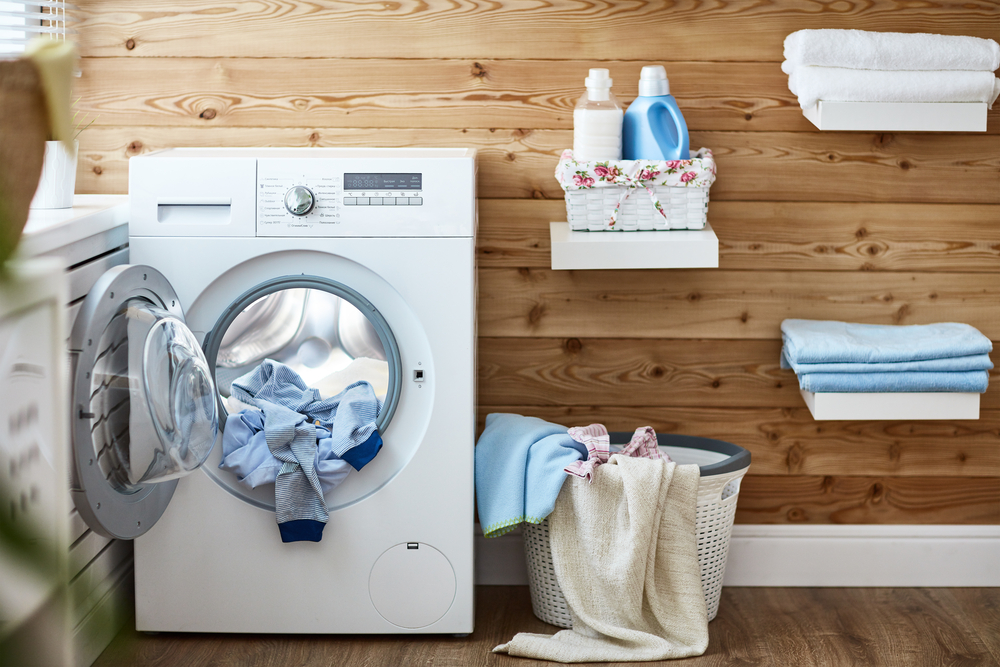If you’re like most people, you probably use your clothes dryer on a daily basis. While this convenient appliance is a lifesaver during the winter months, it’s important to be aware of the mistakes that can damage your clothes and shorten the life of your dryer.
Here are five dryer mistakes to avoid:
- Failing to clean the lint filter before every load is not only a fire hazard, but may lead to overloading your dryer or using improper cycle settings. Depending on what type of laundry you’re doing, small amounts of residual fabric softener can leave a waxy film that clogs up the screen and restricts air flow through the machine. Dryers need airflow in order for proper drying performance. This is especially important with high-efficiency (HE) washers that rely more heavily on airflow due to their condensing action—wet clothes left inside create an environment for mold and mildew.
- Overloading the dryer is a major no-no, in addition to potentially causing a fire hazard—it can actually break the machine. An overloaded dryer can damage the drum, bearings and other components by causing them to rub together and break. This also interferes with proper tumbling action, leading to under-drying, wrinkling and excessive wear on fabrics. It may take longer for a load of laundry to dry as well—adding time and money to your utility bill.
- Using the wrong cycle settings is another common mistake many consumers make when using their dryer. The “Cottons” cycle is designed for regular cotton items like towels or T-shirts that need high heat in order to get fully dry in one cycle; they are not meant for down comforters! Conversely, low heat is needed for delicates or other items that are prone to shrinkage. Using the incorrect cycle setting can also cause damage to fabrics, especially if you’re using high heat on a load of delicates.
- Drying items made from synthetic fibers, such as polyester, spandex or rayon is not recommended in most dryers. These fabrics may become extremely wrinkled and potentially catch on fire in the dryer. For these types of fabric, it’s best to either hand-wash with a mild detergent, use a drip dry method, or take them to the cleaners instead of the dryer.
- Finally, leaving your laundry in the dryer too long can lead to over-drying and shrinkage. This typically occurs when a load of laundry is left in the machine overnight. In order to get your clothes out of the dryer as soon as possible, push start if you have one on your dryer. If not, use a programmable timer so that your machine turns off automatically after a set number of minutes—this way you can be sure they won’t over-dry while you’re at work or asleep.
Important Information To Remember
Each year an estimated 15,500 fires are caused by clothes dryers – many times leading to serious injury and death. Clothes dryers generally do not spark themselves into flames; however, their location in your house provides the fuel for them to ignite.
An open flame is required to light most fabrics, with heat being necessary to sustain combustion. Since lint is highly combustible and often remains in your dryer throughout the drying cycle, it’s a key component that can contribute to this spark. Under normal circumstances, the heat of the tumbling drum combined with residual heat from laundry items after drying will ignite this lint, which then assists in sustaining the fire.
It’s important to keep all vents clear so there are no restrictions on airflow through your machine—this means cleaning out any built-up lint lodged around or under your dryer as needed . It may be useful to clean underneath the dryer occasionally as well—especially if you live in an area where humidity is high.
If your dryer uses gas, it’s important to check the air filter on a regular basis (after every load) and change it as needed. It should be checked more often if you notice any malfunctions or service issues with your machine.
It’s also important to make sure your laundry items are not too bulky for your dryer since this can lead to airflow restrictions, as well as allow lint from these items to build up inside of the vent exhaust system. Lint from towels, wash cloths and other large items may clog this tubing over time as well – preventing proper airflow through the vent.
Most dryers today operate at temperatures ranging from 120 to 160 degrees Fahrenheit. However, if your clothes are still damp after the drying cycle has finished, you can “re-dry” them without risk of starting a fire—simply switch to the air fluff setting for about ten minutes or until they are completely dry.
By following the tips outlined in this post, you can help ensure your dryer is running safely and efficiently. Be sure to inspect your unit on a regular basis and call us for service if you notice any issues. With a little bit of preventive maintenance, you can avoid costly (and dangerous) mistakes with your clothes dryer.
